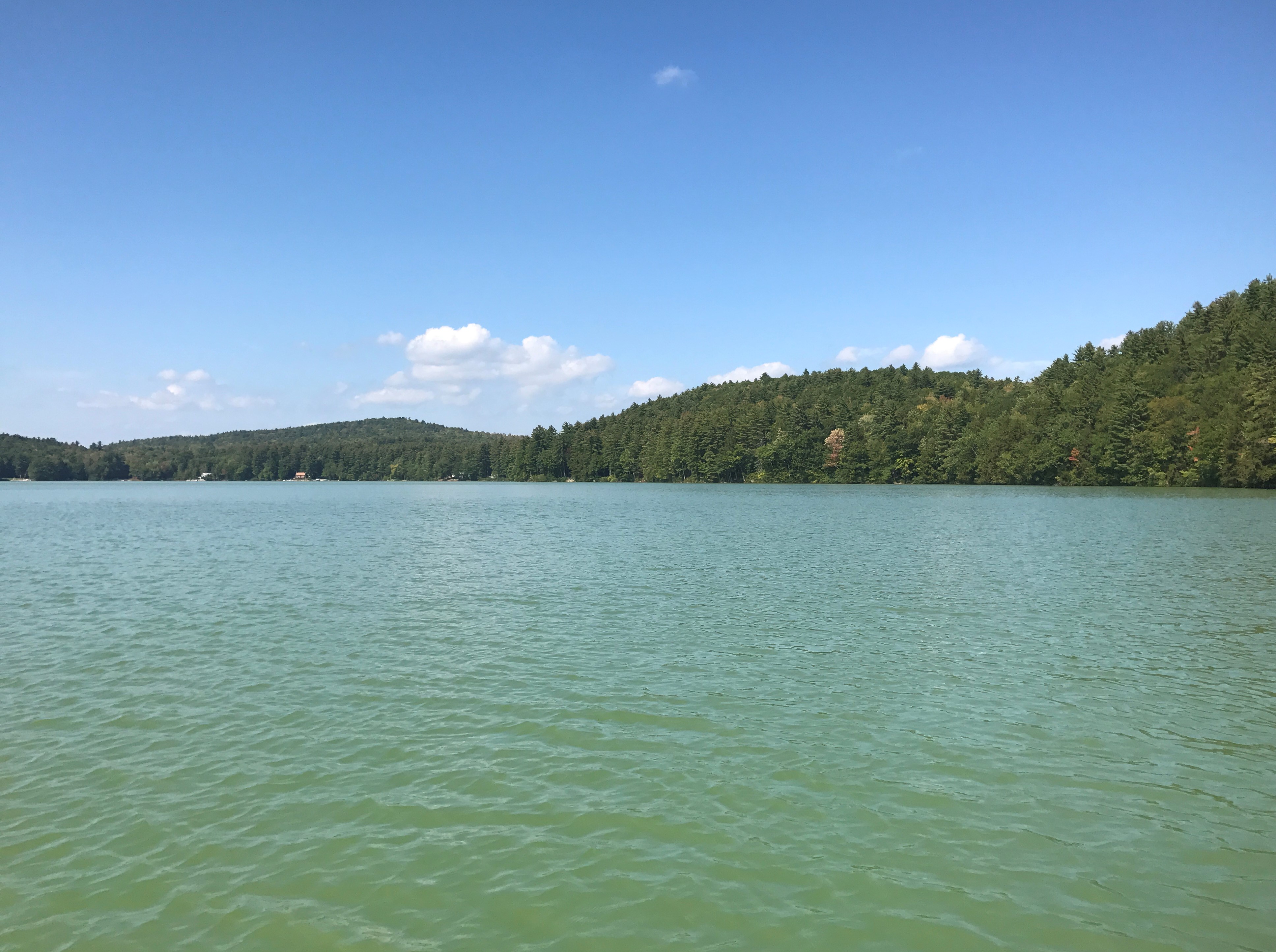Home → Water Quality → Monitoring → Lakes → Algal Blooms
Algal Blooms in Maine Lakes

What are algal blooms?
Algae are small plant-like organisms. They can be found in nearly every body of water. These organisms are an important part of a lake community. However they can occasionally grow quickly (bloom) and take over a lake. Algae can form thick mats or scum, covering large portions of a lake or pond. In addition to disrupting the beauty of lakes, these blooms can produce toxins that are harmful to human and animal health.
What makes a bloom harmful?
Harmful Algal Blooms (HABs) are caused by blue green algae. These are not actually algae but a type of bacteria called cyanobacteria. Under certain conditions, the cyanobacteria can quickly multiply to form HABs. Many species of cyanobacteria can produce toxins that can cause symptoms from rashes, to nausea, to diarrhea, and in severe cases death.
Maine DEP defines an algal bloom as a nuisance bloom when the clarity of the water falls to two meters (6.6 feet) or less. We currently consider that lakes having clarity of less than one meter (3.3 feet) are having a Harmful Algal Bloom (HAB).

For more information on cyanobacteria and their toxins in Maine go to the cyanobacteria page.
What should I do if I suspect a bloom?
The water at my lake looks strange, I think there is a bloom, what should I do?
- What does the water look like? Check these descriptions.
- If you have a bloom to report, go to the DEP Report Blooms page.
What can I do to protect my lake from blooming?
High levels of nutrients such as phosphorus and nitrogen are often necessary for HAB formation. In Maine most of these nutrients are washed into our lakes during storms and snowmelt events where water washes over lawns, farm fields, roads, driveways, and construction sites.
There are many ways you can keep your lake safe:
- Reduce soil erosion by seeding and mulching bare areas.
- Maintain a ribbon of woody vegetation between your property and the lake.
- Direct water from roofs and driveways to stable vegetated areas.
- Reduce or eliminate the use of fertilizer on lakefront property. If you must fertilize, apply fertilizers in the correct amount and only when necessary.
- Regularly maintain your septic system.
Volunteer in your community. Here are some resources:
- Lake Stewards of Maine
- Lakes Environmental Association
- Consider getting your property certified as LakeSmart
Where can I get more information on Maine Lakes?
- A helpful site to visit is Lakes of Maine. There you can look up water quality information on specific lakes.
- Maine Lakes Society is a volunteer organization with information on many lake protection resources.
- DEP's helpful tips for shorefront property owners
How can I tell if my lake is safe?
It is difficult to tell if a lake is safe at any given moment because conditions can change quickly. And not all algal blooms produce toxins.
You can check this map to see if your lake blooms regularly.
Also use the following guidance:
When in doubt, stay out! If the lake looks green or cloudy or you can't see the bottom in 4-5 feet of water because it is so green, do not go in.
Stay out of any water that looks discolored, smells bad, or has scum on the surface.Algal scums along the shore have the highest concentrations of toxins.
Rinse thoroughly with soap and fresh water if you come in contact with a bloom. And if you shower with lake water during a bloom, keep showers brief. Breathing toxins in shower mist could cause health issues.

Are blooms a danger to pets?
There have been no confirmed cases of pets dying due to harmful algal blooms (HABs) in Maine. However HABs can be a serious threat to animals.
If you suspect a bloom, keep your pets away. Pets are more likely than humans to drink from an impacted lake. When they groom themselves, pets can swallow toxins on their fur.
Pets should be immediately rinsed off with soap and fresh water after they come into contact with water that may be blooming or have scums, even if it is not suspected to be toxic.
Symptoms in animals appear more quickly than in humans.
Symptoms of toxin ingestion in pets include vomiting, diarrhea, excess salivation, difficulty breathing, convulsions physical distress, and death.
If your pet begins to experience any of the these symptoms, please contact your local veterinarian immediately.